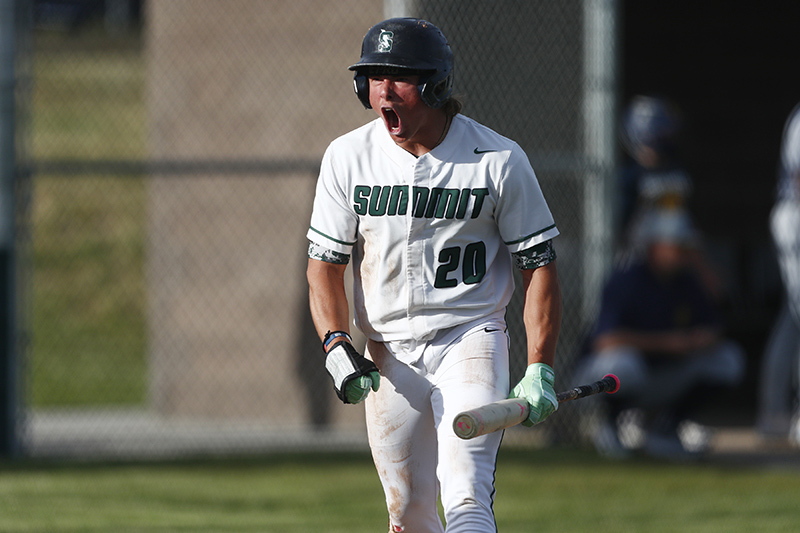Will love for the long ball live on?
Published 12:00 am Thursday, March 29, 2018
Imagine teleporting into a baseball video game. That, John Mozeliak said, is how he felt watching college hitters on a recent visit to an NCAA Division I program. All the data that might appear on the screen of a virtual game was available, in real time, during batting practice.
“These kids are getting instant feedback,” said Mozeliak, the St. Louis Cardinals’ president for baseball operations. “They know how hard they’re hitting it and they know what angle they’re hitting it at. They know right away what happens if they make subtle changes. So, mentally, it’s easier for these kids to just make the change, because they’re used to that type of instant feedback.”
Trending
Give elite athletes an incentive to play a certain way — and the tools to show them how — and this is what you get: a convergence of talent and technology that has rapidly turned baseball into a test of power at the plate and on the mound.
Hitters seek home runs and pitchers hunt strikeouts, and both statistics reached unprecedented levels in the big leagues last season: 6,105 homers and 40,104 strikeouts.
But as a new season dawns, many baseball people wonder where the game evolves from here. It is not a question of if things will change, they say, only when and how.
“Everything goes in cycles, and you swing too far before you have to make a correction,” said Cleveland Indians reliever Andrew Miller, who is entering his 13th season. “That’s just the reality of it, no matter what it is. By the time you realize it’s a problem, it’s too late, in a sense. The teams that win are the ones that adapt early on.”
The Houston Astros won the title last season by mastering the modern game with a roster of contact-hitting sluggers who were instructed to swing only if they thought they could hit a home run. They pulled it off for a simple reason: talent.
“Look, at the core of it? They (the Astros) have great players,” said David Forst, the general manager of the division rival Oakland Athletics. “They have stars. So whether it was a philosophy of contact versus power, they drafted high and they nailed the right guys. They got Carlos Correa. They did a great job with Jose Altuve. Star players are going to succeed no matter what the environment is.”
Trending
In the early 2000s, the low-budget A’s famously found cheap, underappreciated assets to complement a traditional core of talented, young starting pitchers. This was the story of “Moneyball,” of course, and soon the rest of the industry caught on, challenging conventional principles.
This is why power hitters like George Springer and Mike Trout are batting first or second in the batting order, and why bunts and stolen bases have mostly fallen out of favor. It is why infielders often shift drastically from batter to batter, and sometimes from pitch to pitch. The Philadelphia Phillies’ new manager, Gabe Kapler, even plans to flip outfielders within games, based on where the ball is most likely to be hit.
“I think there’s a great possibility that shifts look entirely different five years from now,” said Ross Atkins, the Toronto Blue Jays’ general manager. “There’s no doubt in my mind that batters will adjust and pitchers will adjust.”
The uppercut swing — a callback to the wisdom of Ted Williams, whether young hitters today know it or not — is the adjustment of the moment. With more and more grounders swallowed up by smartly positioned infielders, hitters decided to lift balls over those fielders’ heads. Pitchers, conditioned to exploit a lower strike zone, largely fell into the trap.
Better balls
Differences in the ball itself have encouraged the hitters. Commissioner Rob Manfred has consistently stated that the balls fall within specifications, though the league is taking steps to standardize their storage. The Arizona Diamondbacks will store balls in a humidor this season, like the Colorado Rockies, in an effort to make the ball react normally in games played at well above sea level.
“The balls are just better,” Atkins said. “They’re more consistent. The margin for error has gotten better and better.”
Better most likely means harder. Former players and longtime executives bemoan umpires’ habit of removing nearly every ball that touches the dirt around the plate. Pitchers can use a scratch to enhance movement, but even if they do not, a well-worn ball tends to not fly as far as a smooth one.
In any case, the essential calculus of baseball — a home run is worth four bases, a single just one — clearly motivates hitters to go deep. Pitchers have responded with more of a north/south strategy, with fastballs riding above the trendy swing path, and curveballs buckling below. No wonder, then, that strikeouts keep rising.
The Astros’ Dallas Keuchel, who led the American League in innings pitched en route to winning a Cy Young Award in 2015, said teams should value pitchers like him who induce weak contact, run lower pitch counts and work deeper into games. It is a logical theory, but the vast inventory of hard-throwing amateurs — cultivated at velocity factories, raised to push the limits of the radar gun — will always captivate teams.
“Getting pitchers that have stuff is still going to be at the top of the list, and stuff usually means swing-and-miss from the hitters,” Astros general manager Jeff Luhnow said. “So that’s going to result in strikeouts.”
Luhnow stressed the value of pitchers who log innings and save the bullpen, though the Astros’ championship roster included no pitcher who worked 160 regular-season innings for the team.
To cover all those innings, the Astros, like many teams, plan to carry 13 pitchers this season, which means a short bench. That helps explain the increasing value teams place on super-utility players who can start regularly in the infield or outfield, like the Astros’ Marwin Gonzalez, the Los Angeles Dodgers’ Chris Taylor and the Chicago Cubs’ Ben Zobrist.
The Cubs pay Zobrist an average of $14 million per season, and they spend an average of $23 million per season for Jason Heyward, their defense-first right fielder. The lighter free-agent contracts given this winter to one-dimensional players like Lucas Duda (one year, $3.5 million with Kansas City) and Logan Morrison (one year, $6.5 million with Minnesota) may offer a hint of what is next.
“Everyone talks about WAR, and WAR isn’t just the offensive side of the game,” said Atlanta Braves general manager Alex Anthopoulos, referring to wins above replacement. “So I think teams are valuing defense and base running more and more, and the more complete a player you are, the more valuable you are. Generally speaking, there’s more value placed on defense — much more.”
The rise of utility players
With so many high-strikeout, high-power hitters in the game, the value of such players has diminished. Theo Epstein, the Cubs’ president for baseball operations, said this also reflects itself in championships. Two recent World Series winners — the Astros and the 2015 Kansas City Royals — rarely struck out. While the 2016 champion Cubs fanned more often, Epstein noted that they took the ball the other way at pivotal moments throughout that postseason.
A change in hitters’ approaches is already underway, Epstein said.
“You can’t see it if you’re too close to it,” he said. “But that’s exactly what’s coming next: teams that make contact in this age of great stuff will be greatly rewarded.”
The richest free-agent contract of the winter went to Eric Hosmer, who left the Royals for an eight-year, $144 million deal with the San Diego Padres. Hosmer hit a career-high .318 last season with 104 strikeouts; that may sound like a lot of strikeouts, but 125 players had more. Hosmer said people harped too much on his lack of fly balls.
“I hit .320 last year and people want to talk about how I hit ground balls all day,” Hosmer said. “Do I need to get the ball in the air more? Yeah, probably. But when you’re talking about it taking away from a season like that, that’s when we’re valuing that stuff a little too much.”
The best scouts and analysts can identify a player’s potential with more precision than ever. Not all hitters should try to raise their launch angle; they might just loft a lot of harmless pop flies. Likewise, not all hitters should prioritize contact; they might just slap a lot of low-impact grounders early in the count.
But with so much money at stake, and so much technology available to a generation that craves it, the players will adapt their game to fit the ever-shifting needs of the industry. In the Astros’ farm system, some hitters use sensors on their bat handles to track everything from bat speed to body rotation. They play on fields with cameras mounted everywhere, measuring every movement. Who knows what will come from it all?
“Players respond to it and ask for it,” Luhnow, the Astros GM, said. “You can use it for defensive alignment, base running, hitting and pitching. We do capture quite a bit.”
He added, with a laugh: “It’s the selfie culture, so we’re just providing the technology for them.”








